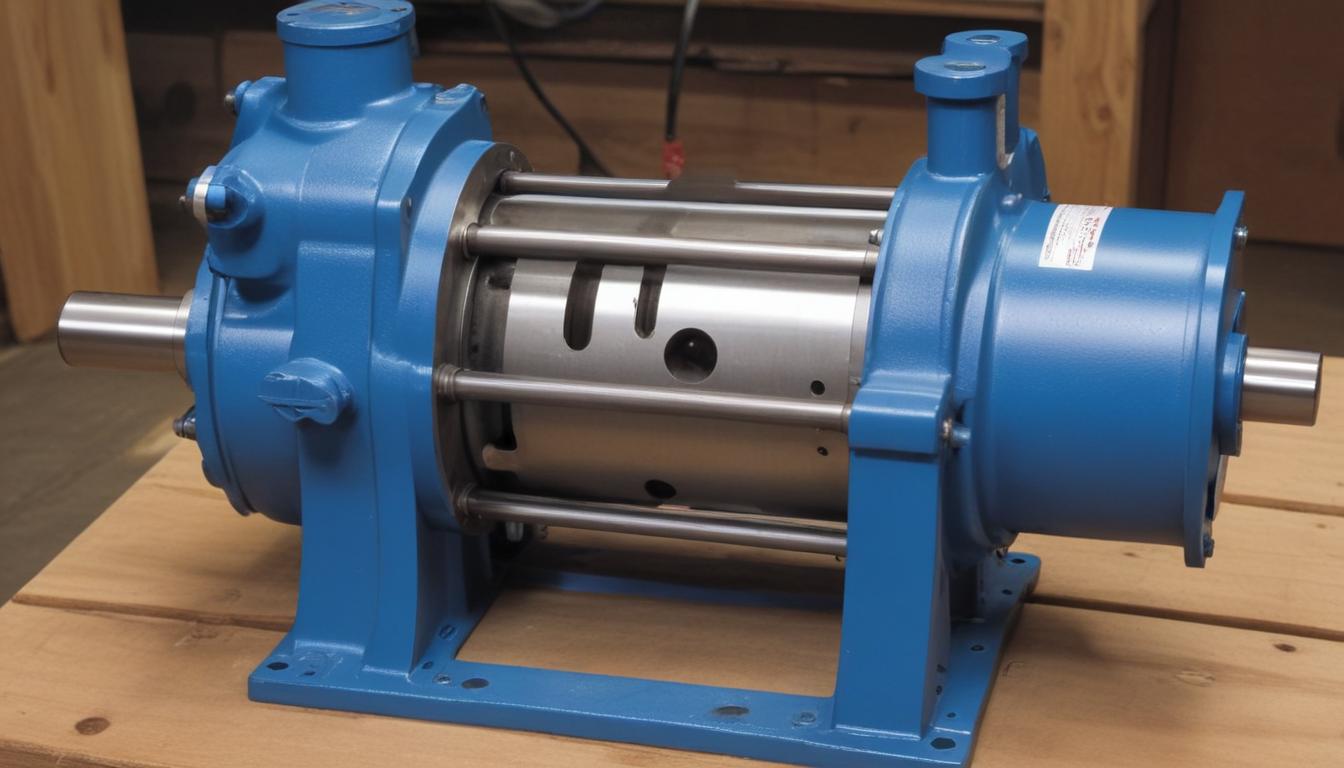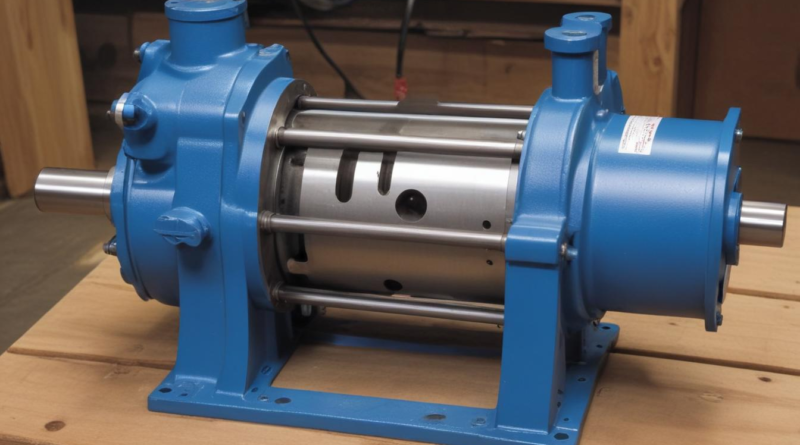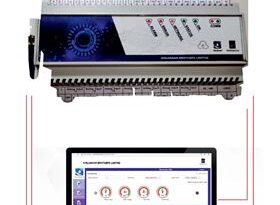how to align pump and motor shafts
Proper alignment between pump and motor shafts is critical for ensuring the longevity and efficient operation of mechanical systems. Misalignment can lead to a variety of issues that not only reduce performance but also increase maintenance costs and downtime.
Benefits of Correct Alignment:
- Enhanced Efficiency: Proper pump alignment minimizes energy loss, ensuring that the system operates at optimal efficiency.
- Reduced Wear and Tear: Aligning motor shafts accurately decreases the stress on bearings and other components, prolonging their lifespan.
- Lower Maintenance Costs: Fewer alignment-related problems mean less frequent repairs and replacements, resulting in cost savings.
- Minimized Vibration: Correct alignment reduces unwanted vibrations, which can cause noise and further mechanical issues.
- Prevented Overheating: Ensuring shafts are properly aligned helps maintain appropriate operating temperatures, preventing overheating of equipment.
| Issue Caused by Misalignment | Impact |
|---|---|
| Increased Energy Consumption | Higher operational costs due to inefficient energy use. |
| Premature Bearing Failure | Frequent bearing replacements and potential downtime. |
| System Vibration | Unsettling operational environment and potential structural damage. |
| Seal Leakage | Potential contamination and loss of lubrication. |
| Reduced Equipment Lifespan | Shortened overall life of the pump and motor assembly. |
Implementing precise alignment procedures is essential for maintaining the integrity of both pump and motor shafts. Regular alignment checks and adjustments help in early detection of potential problems, ensuring smooth and reliable operation of the entire system.
methods of shaft alignment
Several techniques can be employed to achieve accurate alignment between pump and motor shafts. The selection of a method depends on factors such as the level of precision required, available equipment, and the specific application. The primary methods include straight edge and feeler gauge, dial indicator alignment, laser alignment, and electronic alignment systems.
Straight Edge and Feeler Gauge:
This traditional method involves placing a straight edge across the coupling faces of the pump and motor. Small gaps between the coupling and the straight edge are measured using feeler gauges. While this approach is cost-effective and straightforward, it lacks the precision required for high-speed or critical applications. It is best suited for preliminary alignment checks or in settings where advanced tools are not available.
Dial Indicator Alignment:
Utilizing dial indicators mounted on each shaft, this method offers greater accuracy compared to the straight edge technique. The indicators measure the displacement of the shafts in both parallel and angular directions. Data from the dial indicators are used to calculate the necessary adjustments needed to achieve alignment. This method is widely adopted in industrial settings due to its balance between precision and cost.
Laser Alignment:
Laser alignment systems provide high-precision measurements by emitting laser beams between the pump and motor shafts. These systems can automatically calculate the misalignment and guide the technician in making precise adjustments. Laser alignment is highly effective for applications requiring tight tolerances and minimal downtime, as it significantly reduces the time and potential for human error associated with manual methods.
Electronic Alignment Systems:
Advanced electronic systems incorporate sensors and digital displays to monitor shaft alignment in real-time. These systems can provide continuous feedback and alerts if misalignment occurs, allowing for proactive maintenance. They are particularly useful in complex or critical operations where ongoing alignment is essential for operational integrity.
| Alignment Method | Advantages | Disadvantages |
|---|---|---|
| Straight Edge and Feeler Gauge | Low cost, simple to use | Limited precision, time-consuming |
| Dial Indicator Alignment | Higher accuracy, widely used | Requires manual calculations, moderate cost |
| Laser Alignment | High precision, quick adjustments | Higher initial investment, requires training |
| Electronic Alignment Systems | Real-time monitoring, proactive maintenance | Expensive, complex setup |
- Straight Edge and Feeler Gauge: Ideal for basic alignment tasks with minimal equipment.
- Dial Indicator Alignment: Suitable for most industrial applications requiring moderate to high precision.
- Laser Alignment: Best for high-speed or critical systems where precision is paramount.
- Electronic Alignment Systems: Optimal for environments necessitating continuous monitoring and immediate corrective actions.
Implementing the appropriate alignment method is crucial for maintaining the integrity of pump alignment procedures. By selecting the right technique based on specific operational needs and equipment capabilities, organizations can ensure optimal performance and longevity of their mechanical systems.
tools and equipment
A variety of specialized tools and equipment are essential for achieving precise alignment between pump and motor shafts. Selecting the appropriate tools not only facilitates accurate alignment but also ensures the efficiency and longevity of the mechanical system. The following outlines the primary tools used in pump alignment procedures:
Laser Alignment Tools:
Laser alignment systems are widely regarded for their precision and ease of use. These tools typically consist of a laser transmitter and receiver, which are attached to the motor and pump shafts, respectively. The laser beam provides real-time data on the alignment status, allowing technicians to make swift and accurate adjustments.
Dial Indicators:
Dial indicators are mechanical devices used to measure the displacement of the shafts in both parallel and angular directions. They are mounted on the equipment to provide precise readings during the alignment process. Dial indicators are particularly useful for applications requiring moderate to high accuracy.
Straight Edge and Feeler Gauges:
This traditional method employs a straight edge placed across the coupling faces, with feeler gauges used to measure any gaps. While not as precise as laser or dial indicator systems, this method remains valuable for preliminary checks or in scenarios where advanced tools are unavailable.
Electronic Alignment Systems:
Advanced electronic systems incorporate multiple sensors and digital interfaces to continuously monitor shaft alignment. These systems offer real-time feedback and can alert operators to any deviations, enabling proactive maintenance and minimizing the risk of misalignment-related issues.
Additional Tools:
- Torque Wrenches: Essential for applying the correct amount of torque to bolts and fasteners, ensuring that adjustments are made securely without over-tightening.
- Micrometers: Used to measure the diameter of shafts and coupling components with high precision, ensuring that all parts meet the necessary specifications.
- Shims: Thin pieces of material used to make minor adjustments to the positioning of pump and motor shafts, facilitating fine-tuning during the alignment process.
- Portable Digital Displays: These devices interface with electronic alignment systems to provide clear and immediate visual feedback on alignment status.
| Tool/Equipment | Function | Advantages | Limitations |
|---|---|---|---|
| Laser Alignment Systems | Provide precise real-time measurements for shaft alignment | High accuracy, quick adjustments, minimal human error | Higher initial cost, requires training to operate |
| Dial Indicators | Measure shaft displacement in multiple directions | Excellent precision, suitable for a wide range of applications | Requires manual interpretation and calculations |
| Straight Edge and Feeler Gauges | Identify gaps between coupling faces | Low cost, simple to use | Lower precision, time-consuming for detailed alignment |
| Electronic Alignment Systems | Continuously monitor and display shaft alignment status | Real-time monitoring, proactive maintenance capabilities | Expensive, complex setup and integration |
Incorporating the right combination of these tools and equipment is vital for effective pump alignment procedures. By leveraging advanced technologies alongside traditional methods, technicians can ensure that motor shafts are aligned with the highest degree of accuracy, thereby optimizing system performance and minimizing the risk of future alignment issues.
step-by-step alignment procedure
 Begin by ensuring that both the pump and motor are securely shut down and isolated from any power sources to maintain a safe working environment. Gather all necessary tools and equipment, including laser alignment systems, dial indicators, torque wrenches, and shims.
Begin by ensuring that both the pump and motor are securely shut down and isolated from any power sources to maintain a safe working environment. Gather all necessary tools and equipment, including laser alignment systems, dial indicators, torque wrenches, and shims.
- Initial Inspection:
- Examine the coupling for any signs of wear, damage, or misalignment.
- Check for any debris or obstructions that may interfere with the alignment process.
- Clean and Prepare Surfaces:
- Thoroughly clean the coupling faces to remove grease, dirt, and old sealant.
- Inspect the shaft surfaces for any imperfections or irregularities that could affect alignment.
- Install Alignment Tools:
- Attach the laser transmitter to the motor shaft following the manufacturer’s instructions.
- Secure the laser receiver to the pump shaft, ensuring it is properly aligned with the transmitter.
- Establish Base Readings:
- Power on the alignment tool and allow it to stabilize.
- Record the initial alignment measurements to establish a baseline for adjustments.
- Perform Initial Alignment Adjustments:
- Loosen the coupling bolts slightly to allow movement.
- Adjust the motor’s position using shims or adjustable feet to align the shafts based on the measurements obtained.
- Re-Measure Alignment:
- Re-check the alignment readings with the laser system to determine the effectiveness of the adjustments.
- Identify any remaining discrepancies in parallel and angular alignment.
- Fine-Tune Adjustments:
- Make incremental adjustments to the motor or pump position as needed to achieve precise alignment.
- Use shims to make minor adjustments, ensuring that each change is small and controlled.
- Tighten Coupling Bolts:
- Once alignment is satisfactory, tighten the coupling bolts in a crisscross pattern to ensure even pressure distribution.
- Use a torque wrench to apply the manufacturer-recommended torque specifications.
- Final Verification:
- Conduct a final alignment check using the laser system to confirm that no movement occurred during tightening.
- Ensure that all alignment parameters fall within acceptable tolerances.
- Secure and Document:
- Secure all alignment tools and remove them from the workspace.
- Document the alignment measurements, adjustments made, and any observations for future reference and maintenance records.
- Restart and Monitor:
- Reconnect the pump and motor to their power sources and gradually bring the system online.
- Monitor the system for any unusual vibrations or noises that may indicate residual misalignment.
Best Practices:
- Always follow the manufacturer’s guidelines for alignment procedures and torque specifications.
- Use calibrated and properly maintained alignment tools to ensure accuracy.
- Conduct alignment checks at regular intervals and after any maintenance or modifications to the system.
- Train technicians thoroughly on the use of alignment equipment and the importance of precise procedures.
| Step | Description | Key Actions |
|---|---|---|
| 1. Initial Inspection | Assess the current condition of the coupling and shafts. | Identify wear, damage, and obstructions. |
| 2. Clean and Prepare | Ensure clean coupling surfaces and inspect shafts. | Remove contaminants and check for shaft integrity. |
| 3. Install Alignment Tools | Set up laser or dial indicators on shafts. | Attach tools securely for accurate measurements. |
| 4. Establish Base Readings | Record initial alignment data. | Use baseline to guide adjustments. |
| 5. Initial Adjustments | Make coarse position adjustments. | Use shims or adjustable mounts. |
| 6. Re-Measure Alignment | Verify the effectiveness of adjustments. | Identify remaining misalignments. |
| 7. Fine-Tune Adjustments | Achieve precise alignment. | Make small, controlled position changes. |
| 8. Tighten Coupling Bolts | Secure the aligned shafts. | Tighten bolts in a crisscross pattern. |
| 9. Final Verification | Ensure alignment remains within tolerances. | Conduct a last measurement check. |
| 10. Secure and Document | Finalize the alignment process. | Remove tools and record data. |
| 11. Restart and Monitor | Bring the system back online and observe performance. | Check for abnormal vibrations or noises. |
Adhering to these detailed procedures ensures that pump alignment is executed with precision, promoting the reliable operation of motor shafts and extending the overall lifespan of the mechanical system.
common alignment issues
Misalignment between pump and motor shafts can manifest in various forms, each presenting unique challenges and potential damage to the mechanical system. Understanding these common issues is essential for timely diagnosis and effective remediation, ensuring the longevity and optimal performance of the equipment.
Types of Misalignment:
- Angular Misalignment: Occurs when the shafts are not parallel, resulting in an angle between them. This can lead to increased stress on bearings and couplings.
- Parallel Misalignment: Happens when the shafts are parallel but offset from each other. This type can cause excessive vibration and uneven wear on components.
- Combination Misalignment: A combination of angular and parallel misalignments, often arising from multiple factors such as uneven footing or thermal expansion.
| Misalignment Type | Symptoms | Potential Causes | Impact |
|---|---|---|---|
| Angular Misalignment |
|
|
Reduces equipment lifespan and efficiency, leading to higher maintenance costs. |
| Parallel Misalignment |
|
|
Leads to inefficiencies and potential for sudden equipment failures. |
| Combination Misalignment |
|
|
Complicates maintenance efforts and accelerates component deterioration. |
Common Causes of Misalignment:
- Installation Errors: Incorrect installation procedures can lead to improper alignment from the outset.
- Thermal Expansion: Variations in temperature can cause components to expand or contract, altering the alignment over time.
- Foundation Settling: Movement or settling of the equipment foundation can disrupt the precise alignment of shafts.
- Wear and Tear: Regular operational stresses can gradually shift shafts out of alignment, especially if maintenance is neglected.
- Mechanical Shock: Sudden impacts or shocks from starting/stopping machinery can displace shafts and couplings.
Impact of Misalignment on Equipment:
- Increased Vibration: Misalignment induces excessive vibrations, which can lead to structural damage and component failure.
- Reduced Efficiency: Energy losses occur as misaligned shafts cause the system to work harder than necessary.
- Premature Component Failure: Bearings, seals, and couplings experience undue stress, leading to their early deterioration.
- Higher Maintenance Costs: Frequent repairs and part replacements result from ongoing misalignment issues.
- Operational Downtime: Unexpected equipment failures disrupt operations, affecting productivity and profitability.
Diagnosing Misalignment Issues:
Detecting misalignment early can prevent extensive damage and costly repairs. Common diagnostic methods include:
- Vibration Analysis: Monitoring vibration patterns can help identify irregularities indicative of misalignment.
- Shaft Testing: Regular inspections using dial indicators or laser alignment tools to measure shaft positions.
- Visual Inspections: Observing coupling conditions, seal integrity, and bearing wear for signs of misalignment.
- Noise Levels: Unusual noises during operation often point to alignment-related problems.
| Diagnostic Method | Description | Advantages | Limitations |
|---|---|---|---|
| Vibration Analysis | Measures vibration levels to detect irregular patterns caused by misalignment. | Non-invasive, can detect issues early | Requires specialized equipment and expertise |
| Shaft Testing | Uses tools like dial indicators or laser systems to measure shaft alignment. | Provides precise measurements, actionable data | Can be time-consuming, depends on tool accuracy |
| Visual Inspections | Involves examining physical components for signs of misalignment. | Simple, cost-effective | May not detect subtle misalignments, requires experienced personnel |
| Noise Levels | Monitors sound patterns for unusual noises indicating misalignment. | Quick and easy to perform | Not always reliable, can be subjective |
Preventive Measures:
Implementing proactive measures can significantly reduce the likelihood of misalignment issues:
- Regular Maintenance: Schedule routine inspections and alignment checks to identify and correct misalignments promptly.
- Proper Installation: Ensure that pump and motor assemblies are installed according to manufacturer specifications and industry best practices.
- Use Precision Tools: Employ high-precision alignment tools and equipment to achieve accurate shaft alignment.
- Monitor Operating Conditions: Keep track of environmental factors and operational stresses that can affect alignment, such as temperature changes and load variations.
- Train Personnel: Ensure that technicians are well-trained in alignment procedures and the use of diagnostic tools.
By recognizing and addressing these common alignment issues, organizations can maintain the integrity of their pump alignment procedures, ensuring that both pump and motor shafts operate harmoniously. This not only enhances system performance but also extends the lifespan of vital components, ultimately leading to increased reliability and cost savings.




